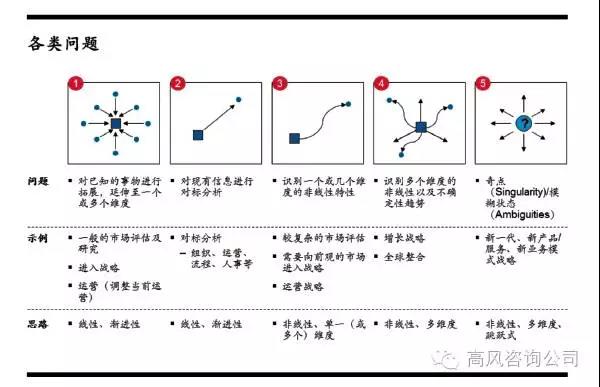
May 16, 2016 @ 01:55 AM | Forbes
By Edward Tse
Multinational corporations (MNCs) started making significant investments in China back in the early 1990s in particular after Deng Xiaoping made his now famous “visit to the south” in 1992. Over a couple of decades of investing in China, MNCs’ attitude on China has evolved. Broadly speaking, there are now three distinct groups of companies we can classify according to their market views. The first group includes MNCs who have come to China, made investments and being unsuccessful, decided that China is not their cup of tea. They generally found it difficult to be profitable and some have withdrawn from China. Examples of these include Home Depot HD +0.31%, Best Buy BBY +0.32%, Media Markt, and Mattel MAT +1.36%. The second group of companies are those belonging to sectors with overcapacity – often quite significant ones – in China. These companies include the cement sector, steel, aluminum and the like. These companies are typically in a wait-and-see mode, waiting to see if and when the overcapacity may be managed away. The final group of companies are those who have found China to be a major, and often highly profitable market. For them, China is one of their largest, if not the largest market in the world. Prime examples are the car makers such as VW/Audi , BMW, Daimler, General Motors and Ford. But this group also include others like Starbucks, Nike and Honeywell. Recently, Apple reported a drop of its quarterly earnings by 13% and China contributed to 26% of that drop.
The Chinese government continues to open more sectors for non-state capital to participate in and it is also visibly applying more stringent laws and policies such as those in anti-trust and anti-corruption. In the open sectors in China, competition is extremely intensive, often the most intensive in the world. In addition to their usual MNC competitors, MNCs will also have to deal with local Chinese competitors, some state-owned and some privately-owned. While MNCs are somewhat used to how other MNCs compete, the ways that the Chinese companies compete are often quite different and hence surprising. The leading Chinese private companies have become increasingly more competitive and in many cases innovative across a wide range of industries. The leading private companies are disrupting traditional businesses with incredible speed and intensity. The rapidly changing, complicated and ambiguous operating environment in China is catching MNCs off guard. Increasingly, MNCs now realize they cannot just apply their cookie cutter ways from the rest of the world to China and that they need to adapt. The question is how and when and all this will need to be aligned and accepted at headquarters.
Though economic growth in China has slowed (off a larger base), the growth of some sectors continues to be very strong. Demand for innovations in the healthcare and environmental sectors is very strong. China became the world’s largest robotics market with purchases making up 25% of the global total. The on-demand mobility app Didi Chuxing totaled 1.43 billion rides in 2015 alone, in contrast to Uber, which took six years to hit 1 billion rides worldwide. Chinese travelers spent US$184B abroad, making them one of the largest tourist segments globally by spending. While there are some structural problems in China’s economy, the growth that is cast within the context of a complicated and fast changing environment will bring a variety of leapfrogging phenomena and is filled with both tremendous opportunities as well as challenges for everyone, MNCs included. The key for MNCs is to know how to strategically anticipate and capture these opportunities and handle the challenges properly. Those MNCs who see the opportunities coming from China, will stay and continue to invest, and if they manage to build the right capabilities on the ground – both tangible and intangible – they will be able to compete effectively.
Years ago, when MNCs started pouring into China, they were the dream employers for China’s youths. Compared to other options at the time, MNCs’ salaries were higher and they provided better training, often accompanied by opportunities to go abroad. Using English daily gave the young Chinese people a sense of glamor and cosmopolitism. If the company they worked for was an elite brand like Coca-Cola, Procter & Gamble or Microsoft, just mentioning this to others would bring them a sense of pride and accomplishment. At that point of time, employment at MNCs was without a doubt the goal of China’s best and brightest.
In the wake of their operations in China, foreign MNCs find their standing with China’s youth in a constant state of flux. For the past couple of decades, many MNCs would often claim that China is their (most) important and strategic market, and that in China they need to “localize.” However, for many, “localization” simply means hiring some token Chinese managers or in some cases, expatriates who have lived in China for a long time. These roles would have nice sounding titles like “China Chairman” or “China CEO” but they often lack full business authority or decision making capabilities. In almost all cases, these local executives are not placed at the core of thought leadership generation at the largest levels of the company for driving China’s strategy, organizations or business models, and for that matter, those for defining China’s role in the company’s global strategy. These considerations and decisions are, typically, in the realm of the global or regional headquarters. In most cases, the so-called “local management” is only for execution and has little real authority.
Many local talents who work for MNCs after a while would find their jobs unfulfilling. Some of them query the MNC employers’ lack of “higher-order purpose” while others find the relatively slow speed of decision making coupled with a general feeling that “the HQ people just don’t get China” a real source of frustration. To be fair, there are many MNCs that are genuine in their desire to hire and groom local talents. Some even make it a strategic imperative. And, at least some MNCs really want their best Chinese managers to eventually make it to the top echelon of their global organizations. However, some MNCs are also frustrated by the locals’ inability to transform themselves into real business thought leaders and by their seeming lack of loyalty. For a handful of MNCs who have had the good fortune of recruiting some real outstanding Chinese talent, their CEOs or HQ senior executives often become defensive after the Chinese executives repeatedly tell them that “China is different.” For the very best Chinese, the opportunities in China today are just overwhelming. As innovation and entrepreneurship are becoming the mainstream in China, career opportunities with significant upside potential are being made available to many young people. MNCs are no longer the best employment option. Creating new ways to win the human capital battle in China will be key for MNCs.
As China continues to evolve, opportunities and risks will inevitably surface and so the context for developing China’s strategy will also evolve. MNCs must understand the context better and leverage that into their strategies, organizations and capabilities.
About the Author
Edward Tse is founder & CEO, Gao Feng Advisory Company, a global strategy and management consulting firm with roots in China. A pioneer in China’s management consulting profession, he led the Greater China operations for two major international management consulting firms for 20 years and is widely known as China’s leading global business strategist. He is author of The China Strategy (2010) and China’s Disruptors (2015).




